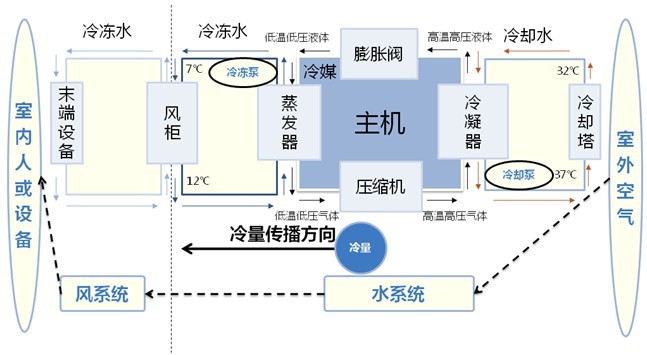Hai Yida Central Air Conditioning Energy Efficiency Control System
General Machine Gasket,Head Gasket,Cylinder Head Gasket Gasket Kit Co.,Ltd , http://www.nsgasket.com
Application Background With the acceleration of human urbanization, a building rises and the central air-conditioning is widely applied to urban buildings. According to the survey, the current building energy consumption accounts for one-third of the total energy consumption of the entire society. In buildings with central air conditioning, central air conditioning is a large energy consumer, accounting for about 60% of the total building energy consumption. Central air-conditioning has huge energy consumption. Therefore, how to improve the energy efficiency of central air-conditioning has become the focus of attention of governments and enterprises.
Take refrigeration central air conditioning as an example. The central air-conditioning is essentially responsible for the role of a porter, which will continuously move the outside world's cooling capacity to the interior. 
The principle of central air-conditioning and the end of the environment is constantly changing, so the central air-conditioning cooling capacity should also be changing. Therefore, the central air-conditioning energy-saving has two directions. The first direction is that it can provide the correct amount of cooling, the amount of cooling supply is too much, the end environment is too cold, and a lot of energy is wasted; if the amount of cooling is too low, it cannot be given. The end provides a comfortable environment. The second direction is how to use the lowest power to deliver cold to the end after providing the correct amount of cooling.
Central air conditioning energy efficiency control system is the first direction of energy-saving applications.
The development of energy conservation from the perspective of control In fact, in the aspect of central air-conditioning energy saving, many pioneers have made outstanding contributions.
Wind control: that is, only control the size of the wind, to change the temperature of the end. However, this method does not cure the symptoms. The water system did not actively promote me to reduce the amount of cooling, so the wind control alone had little effect. Therefore, this energy-saving method was quickly replaced.
Wind control + water control: The water control here is group control of the host. At this time, it is often seen that the cooling power of two main units is too low, and the cooling power of three main units is too high. As a result, the realization of variable frequency regulation of the water system has become a target for equipment manufacturers.
Wind Control/Adjustment + Water Transfer: Under this technique, the system can provide any amount of cooling from zero to maximum at the end. But the regulation of water is such a process that the end reacts to the wind and then reacts to the water. This adjustment process is slow and inaccurate, and it also produces useless work.
Wind adjustment + water transfer + energy management (central air conditioning energy efficiency control system): Under this technology, the water system can directly adjust the optimal cooling capacity according to the temperature of the end. Ensuring efficient use of energy under the premise of ensuring the best cooling capacity provided to the terminal.
Central air-conditioning control perspective Energy-saving development System working principle Monitoring - monitoring system Real-time monitoring of temperature, carbon dioxide solubility and other parameters in the terminal environment and air conditioning system;
Analysis - Calculate the cooling capacity and the best cooling mix according to the attributes of the terminal environment and the central air conditioner itself;
Control - Gives instructions to the wind system and water system to provide the best amount of cooling for the end.
System Implementation Function Monitoring Air Conditioning Facilities Condition Monitoring Air Conditioning Facilities Energy Efficiency Monitoring Air Conditioning Process Parameters Monitoring Environmental Parameters Variable Flow Control Air Conditioning Air System Variable Flow Control Air Conditioning Water System Group Control Air Conditioning Water System Coordinated Control and Adjustment Feng Shui System System Value Design Quickening and Satisfaction Complete sets of products, modular design, modular selection; interface less, the overall design is fast.
Save time and effort for construction: integrated design, quick construction commissioning and less work interface.
Easy to operate and save trouble: integrated design, convenient operation.
Simple and time-saving maintenance: integrated design, simple operation and maintenance; providing remote maintenance, low maintenance costs.
Energy savings can be significant: Energy efficiency is 20%-30%.
Predicted in advance, more secure: power quality monitoring, fault alarms and warnings.
The wiring is concise and more reliable: the overall design of the product is manufactured and the field wiring is less; the standard production is guaranteed and the stability is high.